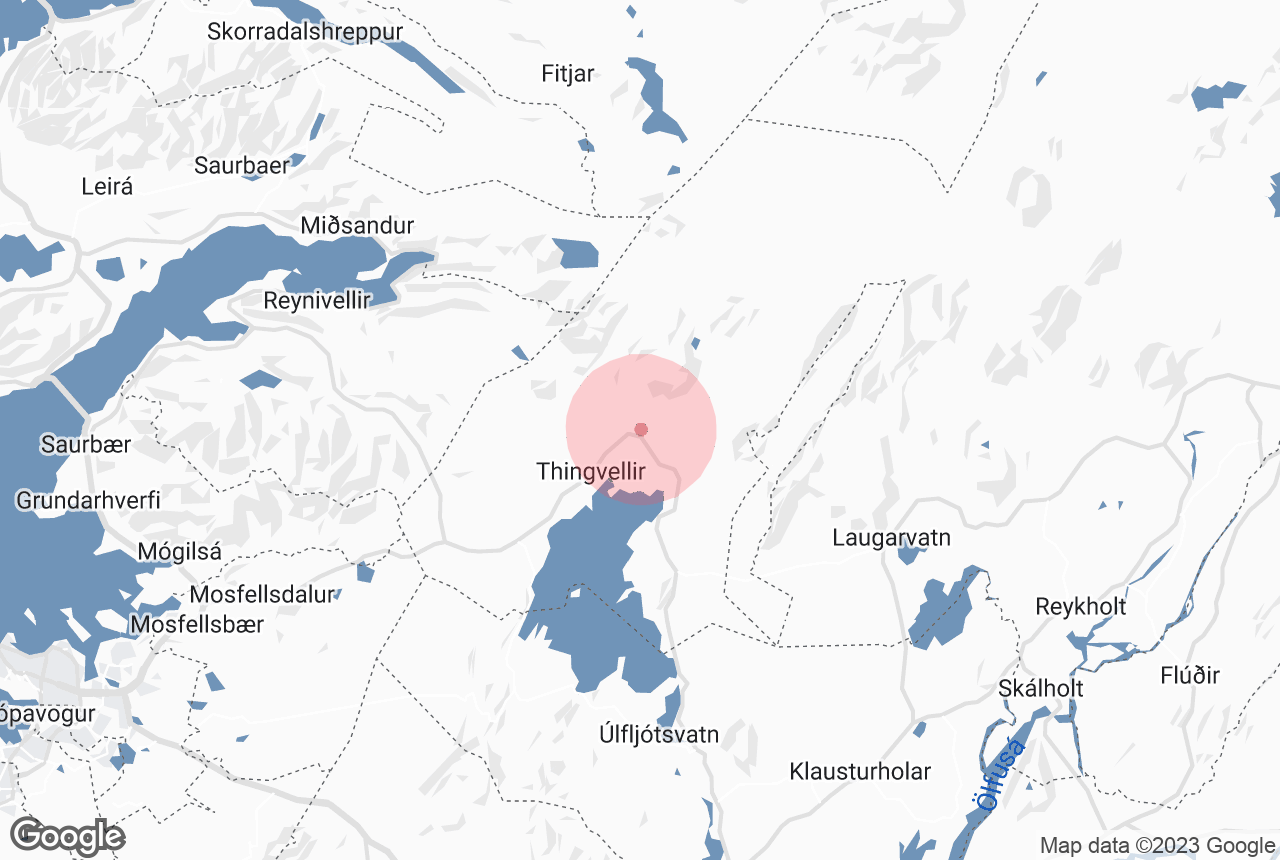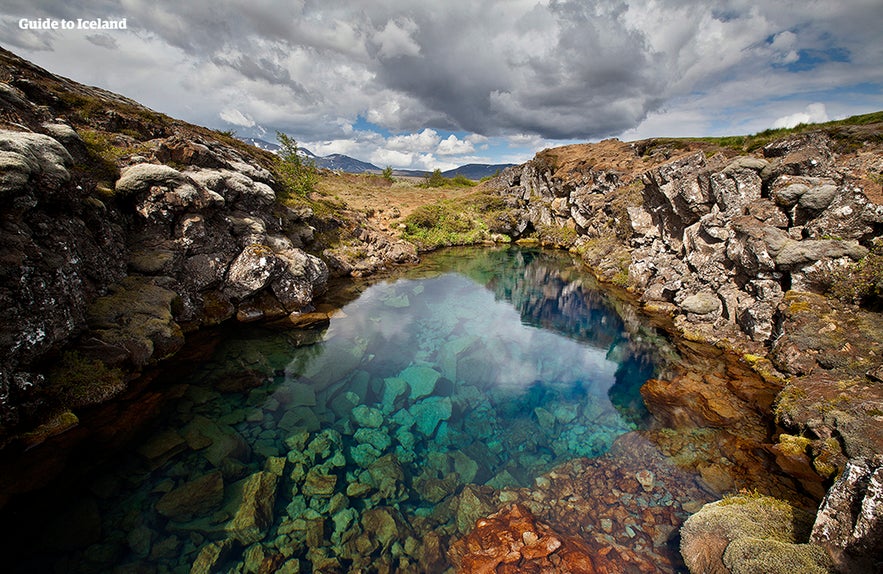
The Mid-Atlantic Ridge is an enormous underwater mountain range that runs through the middle of the Atlantic Ocean. Experience this geological wonder firsthand in Iceland, one of the only places in the world where the ridge rises above sea level.
Travelers to Iceland can visit the Mid-Atlantic Ridge on Golden Circle tours or Reykjanes tours. It can be seen at Thingvellir National Park along the famous Golden Circle Route, or on the Reykjanes Peninsula west of Reykjavik.
Why You Can Trust Our Content
Guide to Iceland is the most trusted travel platform in Iceland, helping millions of visitors each year. All our content is written and reviewed by local experts who are deeply familiar with Iceland. You can count on us for accurate, up-to-date, and trustworthy travel advice.
The Mid-Atlantic Ridge marks the boundary between the Eurasian and North American tectonic plates. This is where the plates meet and slowly drift apart, at a rate of about 1 inch (2.5 centimeters) per year. The movement of the plates influences volcanic and seismic activity in Iceland, contributing to its diverse landscape of geysers, hot springs, and rugged terrain.
In this guide, we have compiled everything you need to know about the Mid-Atlantic Ridge and the best activities to experience its wonder.
Things To Know About the Mid-Atlantic Ridge
-
The Mid-Atlantic Ridge runs across the Atlantic Ocean floor, separating the tectonic plates of North America and Eurasia.
-
The ridge plays a key role in Iceland's geological makeup, volcanic and seismic activity, and ability to harness geothermal energy.
-
Iceland is one of the few locations in the world where the ridge is visible above water, drawing geology enthusiasts and snorkelers keen to swim between continents.
-
The best places to see the Mid-Atlantic Ridge in Iceland are Thingvellir National Park and the Reykjanes Peninsula.
The Mid-Atlantic Ridge Location and Geology
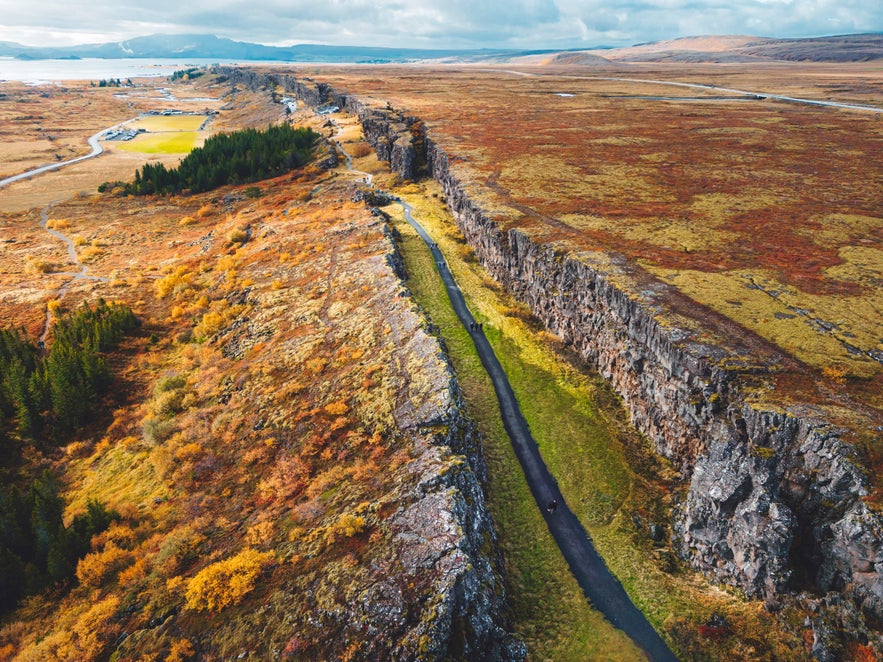 The Mid-Atlantic Ridge stretches across the Atlantic Ocean, from the Arctic Ocean in the north to the southern Atlantic near Antarctica in the south. Discovered in the 1950s, it is a divergent plate boundary: here, the Eurasian and North American tectonic plates move apart, creating a new oceanic crust.
The Mid-Atlantic Ridge stretches across the Atlantic Ocean, from the Arctic Ocean in the north to the southern Atlantic near Antarctica in the south. Discovered in the 1950s, it is a divergent plate boundary: here, the Eurasian and North American tectonic plates move apart, creating a new oceanic crust.
The Mid-Atlantic Ridge is one of the longest underwater mountain ranges in the world, at over 9,900 miles (16,000 kilometers) long. Iceland, sitting above the westernmost section of the ridge, is the only place on Earth where the Mid-Atlantic Ridge is visible above sea level.
The ridge cuts through Iceland, placing a part of the island on the North American tectonic plate and the other on the Eurasian plate. In essence, this technically makes Reykjavik a North American city while the Eastfjords are still a part of Europe.
Iceland’s Formation and the Mid-Atlantic Ridge
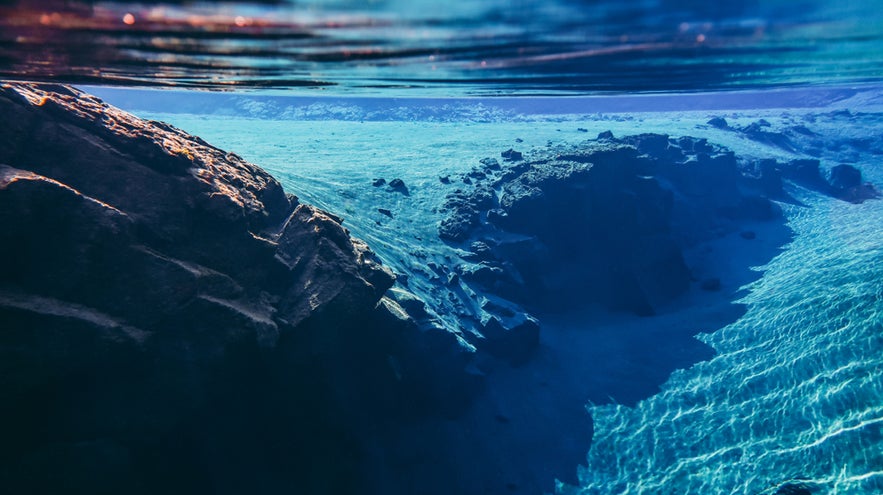 The island's formation began around 25 million years ago when the North American and Eurasian tectonic plates started to drift apart. This movement and subsequent earthquakes created a rift valley along the Mid-Atlantic Ridge.
The island's formation began around 25 million years ago when the North American and Eurasian tectonic plates started to drift apart. This movement and subsequent earthquakes created a rift valley along the Mid-Atlantic Ridge.
A series of volcanoes then formed, with increasingly intensifying activity that has been shaping Iceland's distinct landscape ever since. The mantle plume, a column of hot rock that rises deep from within the Earth's mantle, causes mantle material to melt, which in turn moves up to the surface and forms new volcanic rock.
The Mid-Atlantic Ridge plays a crucial role in Iceland's geothermal activity. The movement of the tectonic plates creates fractures in the Earth's crust, allowing water to seep down to the rocks beneath. There, it is heated by the magma and rises back to the surface as hot springs and geysers.
Iceland has harnessed the power of geothermal energy, using its position on the Mid-Atlantic Ridge to its advantage. The country is a global leader in converting geothermal energy into electricity and heating. Geothermal energy is responsible for heating all of Reykjavik, and Iceland produces nearly 30% of its electricity from geothermal sources.
How To Visit the Mid-Atlantic Ridge in Iceland

The Mid-Atlantic Ridge at Thingvellir National Park
Thingvellir National Park is about 25 miles (40 kilometers) from Reykjavik along the famous Golden Circle Route. You can easily drive there with rental cars or book one of the numerous Golden Circle tours departing from the capital.
Once you arrive at Thingvellir, you can explore the park's hiking trails and learn about Iceland's history and culture at the visitor center. Thingvellir National Park is a UNESCO World Heritage Site with a rich and fascinating history dating back to the Viking Age.
The main walking trail in the park brings you through Almannagja Gorge, the most visible part of the ridge.
Silfra Fissure is Thingvellir's biggest draw for travelers wishing to explore the Mid-Atlantic Ridge. It is especially popular among scuba divers and snorkelers who come to swim between the tectonic plates of North America and Europe. They also get to witness unique geological formations underwater.
The crystal-clear water in Silfra comes from the nearby Langjokull Glacier. Porous lava rocks filter the water for up to 30 years before it reaches the fissure. The result is water so clear that you can see up to 330 feet (100 meters) underwater, making for an incredible snorkeling experience. The water in Silfra is cold, with temperatures ranging from 35–30 F (2–4 C).
If you’d like to snorkel, book one of many Silfra snorkeling tours, like this top-rated Wetsuit Silfra Snorkeling Tour, to experience the Mid-Atlantic Ridge from underwater.
The Mid-Atlantic Ridge on the Reykjanes Peninsula
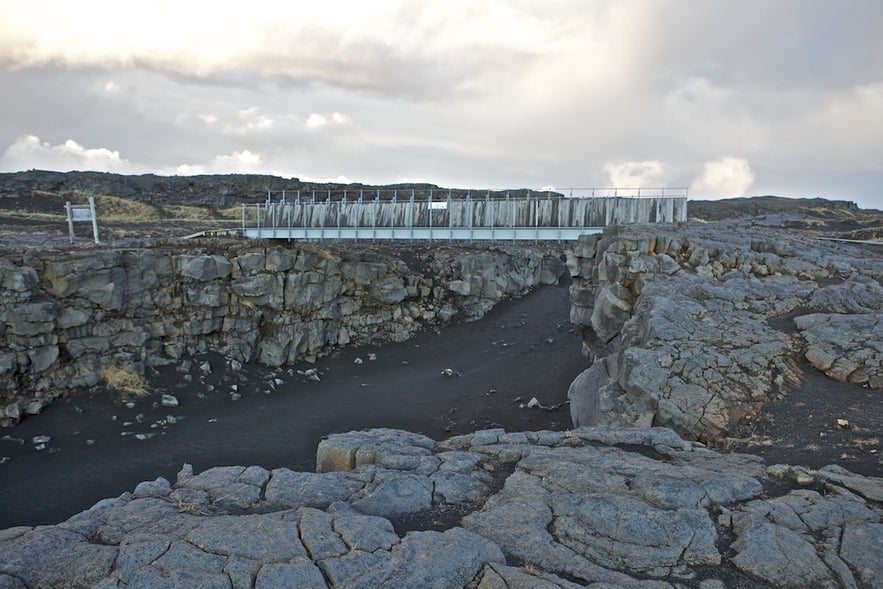 Photo from Wikimedia, Creative Commons, by josef knecht. No edits made.
Photo from Wikimedia, Creative Commons, by josef knecht. No edits made.
The Reykjanes Peninsula is another location in Iceland where the Mid-Atlantic Ridge is visible. The peninsula is home to many hot springs, geysers, and volcanic craters that are popular with visitors. In addition, the Bridge Between Continents at Sandvik is a small footbridge that spans a narrow channel between the two tectonic plates.
The Bridge Between Continents symbolizes the connection between the continents of North America and Europe and the geological forces that shaped Iceland. Visitors can stand with one foot on the North American plate and the other on the European plate — a fun photo opportunity.
Top Tours To Visit the Mid-Atlantic Ridge
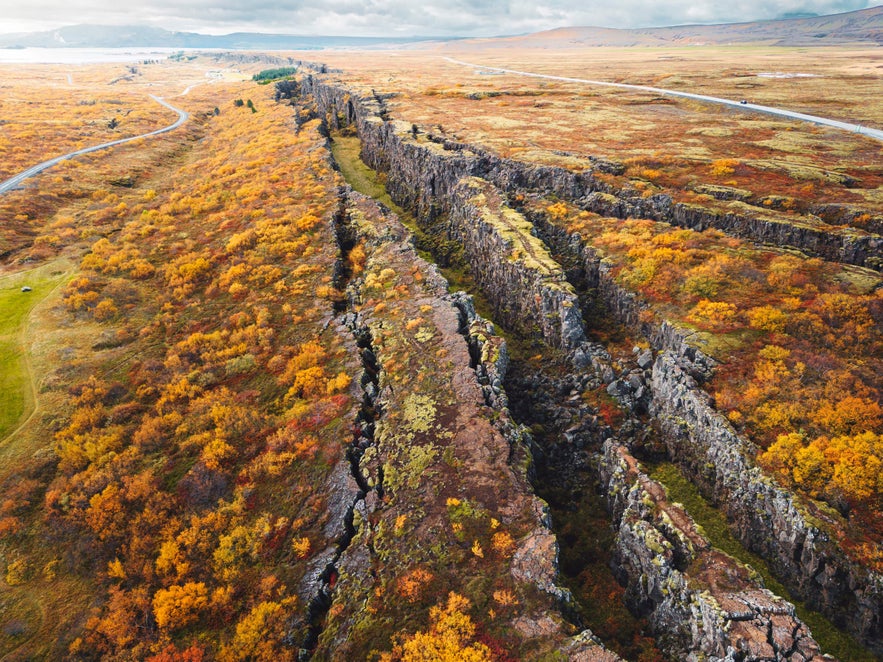 There are a number of ways to visit the Mid-Atlantic Ridge while exploring Iceland, including self-drive tours, guided day tours, multi-day guided tours, and vacation packages. Here are some of our top recommendations:
There are a number of ways to visit the Mid-Atlantic Ridge while exploring Iceland, including self-drive tours, guided day tours, multi-day guided tours, and vacation packages. Here are some of our top recommendations:
Top Self-Drive Tours
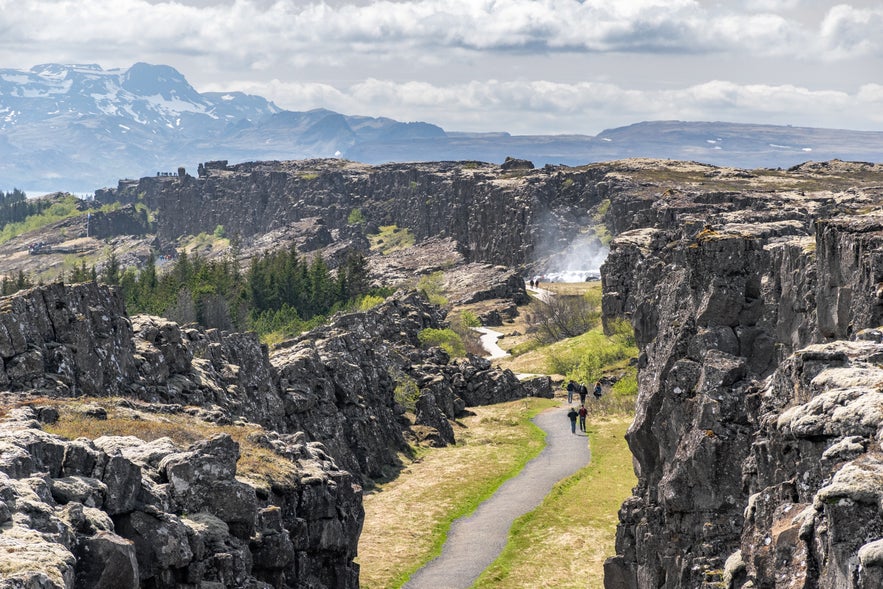 For travelers looking for flexibility and independence, here are some highly recommended self-drive tours:
For travelers looking for flexibility and independence, here are some highly recommended self-drive tours:
-
7-Day Northern Lights Self-Drive Tour — Visit all the best places on the South Coast, Golden Circle, and Snaefellsnes Peninsula.
-
1-Week Summer Self-Drive Tour of the Ring Road & Golden Circle — Discover Iceland in the summer with stops at Thingvellir National Park and snorkel between two continents.
Top Guided Day Tours
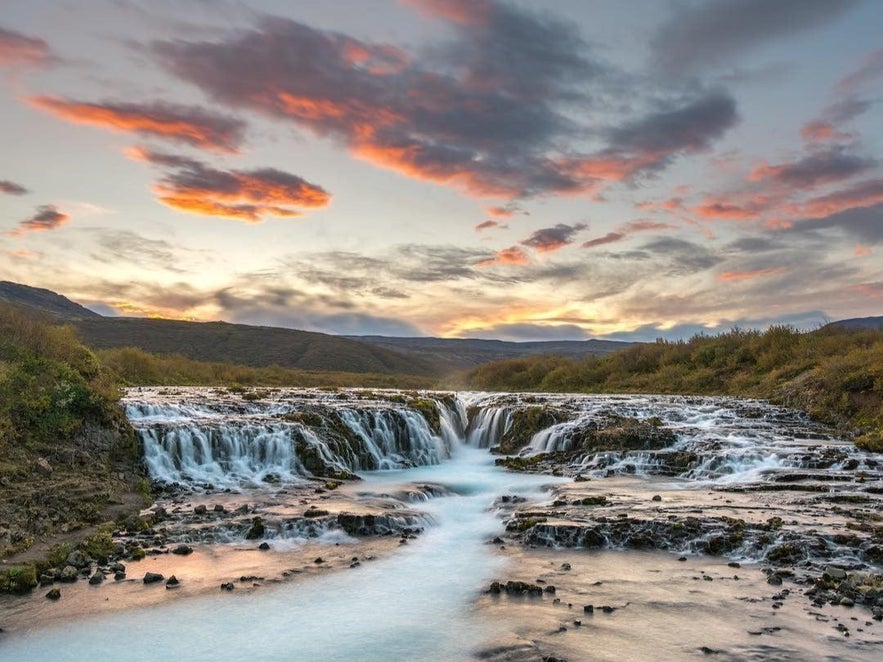 Experience the Mid-Atlantic Ridge with an expert guide. Here are some top-rated guided day tours:
Experience the Mid-Atlantic Ridge with an expert guide. Here are some top-rated guided day tours:
-
Golden Circle Minibus Day Excursion — Hop onboard this small group minibus tour of the Golden Circle, which includes a stop at Thingvellir National Park.
-
Golden Circle Afternoon Tour — Admire the views of the Mid-Atlantic Ridge at Thingvellir National Park, edging gradually onto the shores of Thingvallavatn, the largest natural lake in Iceland.
-
5-Hour Super Jeep Tour to the Mid-Atlantic Ridge on the Reykjanes Peninsula — Explore one of Iceland's most fascinating geological wonders on this magical super jeep tour to the Mid-Atlantic Ridge.
Top Multi-Day Tours
Extend your exploration with these comprehensive multi-day guided tours:
-
8-Day Guided Tour of the Ring Road — Explore Iceland’s Ring Road with a small group and guide, and see one of the few places where the Mid-Atlantic Ridge is visible on the surface.
-
Guided 6-Day Summer Tour of Iceland With the Best of the South, East & North — Embark on a journey through some of the best sights in all of Iceland, including a visit to Thingvellir National Park.
Top Vacation Packages
For a hassle-free trip, consider these curated vacation packages that include Mid-Atlantic Ridge visits:
-
5-Day Northern Lights Winter Vacation Package — Experience winter in Iceland with a stop at Thingvellir National Park to witness how the shifting tectonic plates shape the region.
-
5-Day Summer Vacation Package — Embark on an unforgettable journey through Iceland’s most breathtaking sights and hidden gems with this carefully designed five-day summer package.
The Mid-Atlantic Ridge FAQs
To provide further insight, we've compiled a list of common questions about the Mid-Atlantic Ridge:
What’s the best time of year to visit the Mid-Atlantic Ridge in Iceland?
Summer (June–August) offers long daylight hours, mild temperatures, and easier access to hiking trails. Winter (November–March) brings a chance to see the northern lights, but roads may be icy, and daylight is limited.
Can I feel earthquakes along the Mid-Atlantic Ridge in Iceland?
Mild to moderate earthquakes occur frequently due to the movement of the Eurasian and North American tectonic plates. Most tremors are too small to be felt, but occasional larger quakes can occur, especially in areas like the Reykjanes Peninsula.
Are there active volcanoes along the Mid-Atlantic Ridge in Iceland?
Several active volcanic systems are associated with the ridge, including Bardarbunga, Grimsvotn, and those on the Reykjanes Peninsula.
Does the Mid-Atlantic Ridge affect Iceland’s climate?
While the ridge itself doesn’t directly influence Iceland’s climate, the geological activity it generates contributes to the presence of geothermal energy. This energy helps moderate temperatures in certain regions and provides natural heating for homes and greenhouses.
Are there any myths or folklore associated with the Mid-Atlantic Ridge in Iceland?
Icelandic folklore is rich with tales of trolls, elves, and hidden people (huldufolk), many of whom are believed to inhabit the lava fields and fissures created by the ridge’s movements. Some locals still respect these traditions by avoiding certain geological formations believed to be dwelling places of these mythical beings.
Will Iceland eventually split into two separate landmasses?
While the plates continue to move apart, new land is constantly being created by volcanic eruptions. As a result, Iceland is unlikely to split but will continue expanding over millions of years.
Embarking on Your Own Mid-Atlantic Ridge Adventure
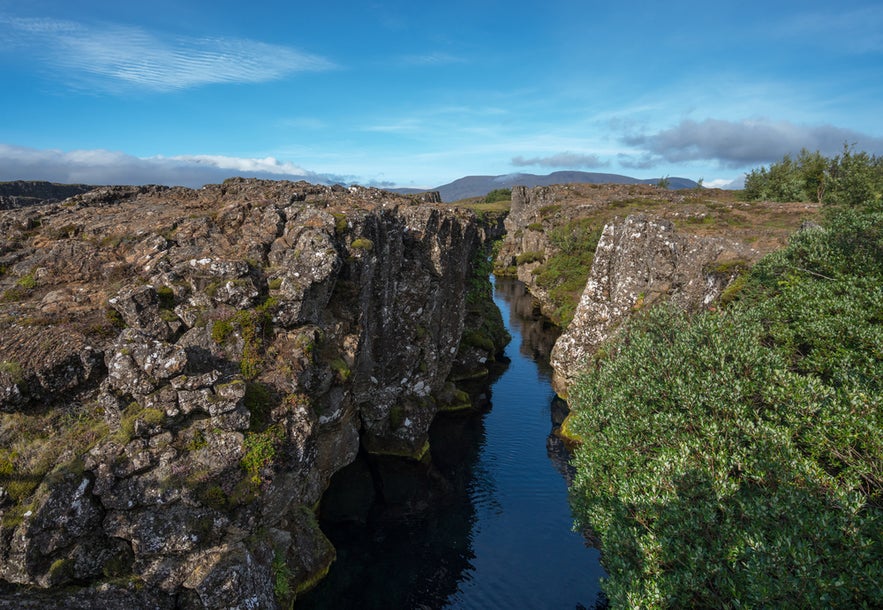 The Mid-Atlantic Ridge in Iceland is not just a geological marvel — it's an invitation to connect with our planet's raw, untamed power. It's a place where you can stand between continents, snorkel in crystal-clear fissures, and witness firsthand the forces that shape our world.
The Mid-Atlantic Ridge in Iceland is not just a geological marvel — it's an invitation to connect with our planet's raw, untamed power. It's a place where you can stand between continents, snorkel in crystal-clear fissures, and witness firsthand the forces that shape our world.
The Mid-Atlantic Ridge is a must-see destination for anyone interested in geology, history, or outdoor adventure. Interested in learning more about tectonic plates in Iceland? Check out Tectonic Plates in Iceland and Where To Find Them.
